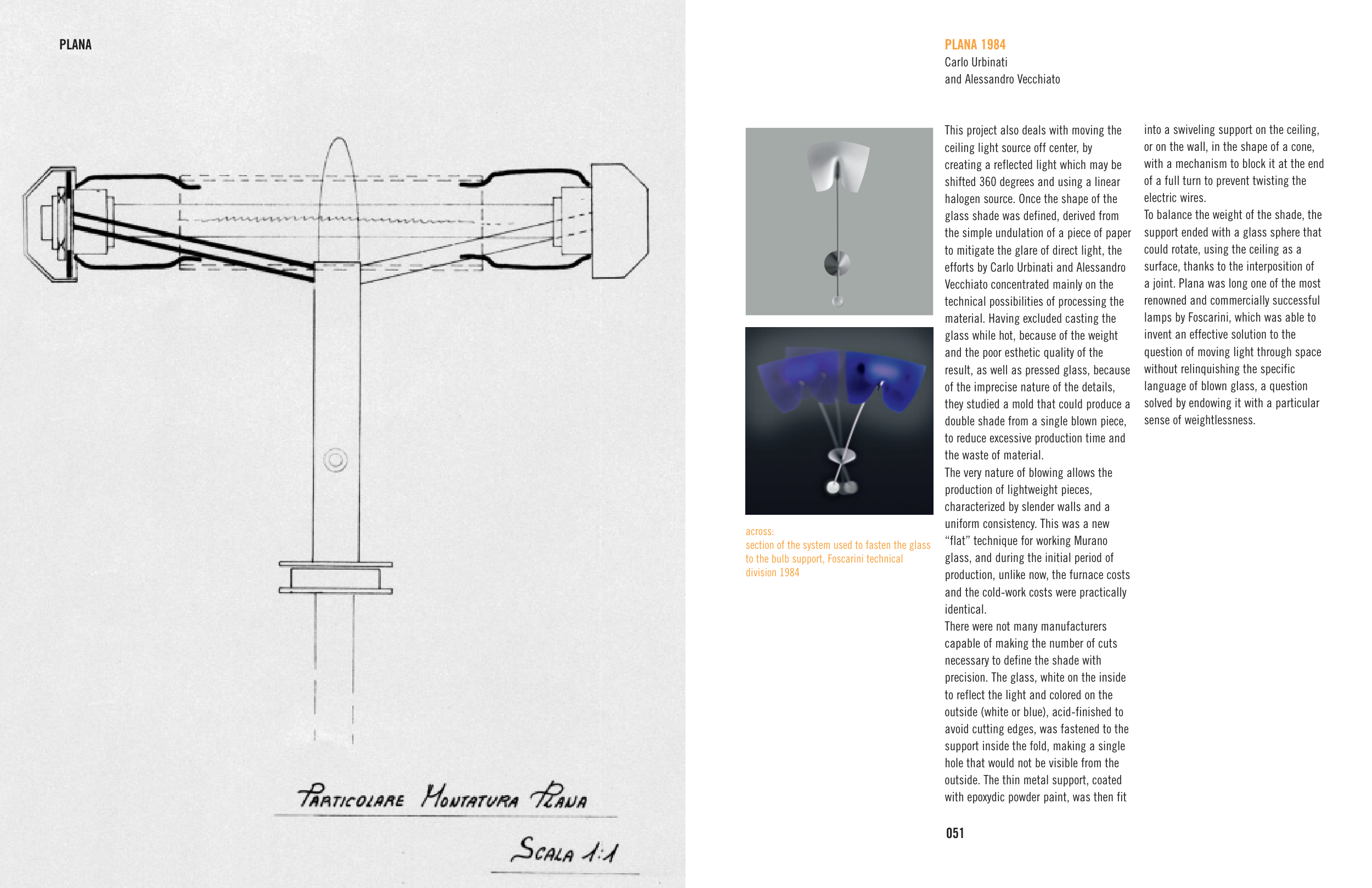051
PLANA 1984
Carlo Urbinati
and Alessandro Vecchiato
This project also deals with moving the
ceiling light source off center, by
creating a reflected light which may be
shifted 360 degrees and using a linear
halogen source. Once the shape of the
glass shade was defined, derived from
the simple undulation of a piece of paper
to mitigate the glare of direct light, the
efforts by Carlo Urbinati and Alessandro
Vecchiato concentrated mainly on the
technical possibilities of processing the
material. Having excluded casting the
glass while hot, because of the weight
and the poor esthetic quality of the
result, as well as pressed glass, because
of the imprecise nature of the details,
they studied a mold that could produce a
double shade from a single blown piece,
to reduce excessive production time and
the waste of material.
The very nature of blowing allows the
production of lightweight pieces,
characterized by slender walls and a
uniform consistency. This was a new
“flat” technique for working Murano
glass, and during the initial period of
production, unlike now, the furnace costs
and the cold-work costs were practically
identical.
There were not many manufacturers
capable of making the number of cuts
necessary to define the shade with
precision. The glass, white on the inside
to reflect the light and colored on the
outside (white or blue), acid-finished to
avoid cutting edges, was fastened to the
support inside the fold, making a single
hole that would not be visible from the
outside. The thin metal support, coated
with epoxydic powder paint, was then fit
into a swiveling support on the ceiling,
or on the wall, in the shape of a cone,
with a mechanism to block it at the end
of a full turn to prevent twisting the
electric wires.
To balance the weight of the shade, the
support ended with a glass sphere that
could rotate, using the ceiling as a
surface, thanks to the interposition of
a joint. Plana was long one of the most
renowned and commercially successful
lamps by Foscarini, which was able to
invent an effective solution to the
question of moving light through space
without relinquishing the specific
language of blown glass, a question
solved by endowing it with a particular
sense of weightlessness.
PLANA
across:
section of the system used to fasten the glass
to the bulb support, Foscarini technical
division 1984


